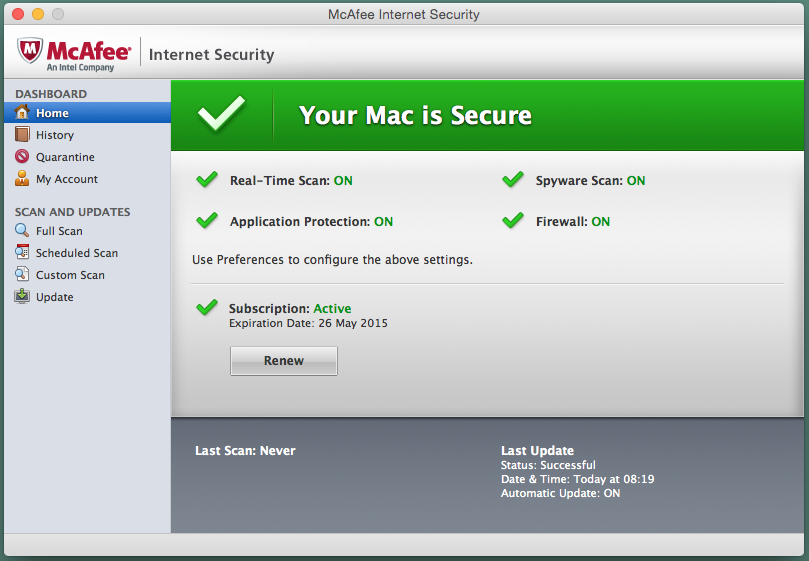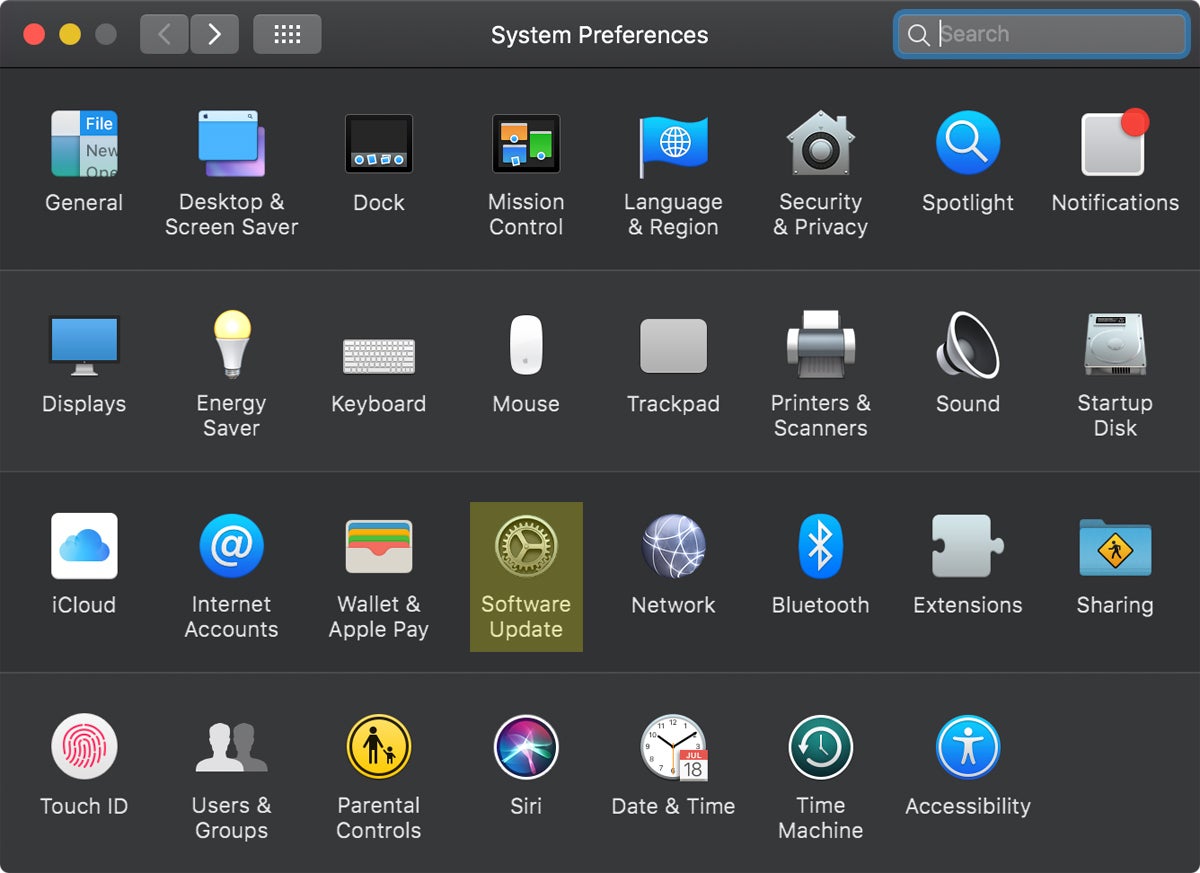- May 24, 2018 Click on the Firewall tab. Click on the lock icon in the bottom left corner of the window and enter your administrator password. Click Turn On Firewall (or Start in OS X). In v10.5 of OS X, Firewall is enabled slightly differently: Go to System Preferences Security. Click on the Firewall tab.
- OS X manages the firewall on a per-application basis, but sometimes you want to open a specific port on your Mac. You can allow or block incoming traffic to specific apps using the Security.
However, that doesn’t stop somebody using a USB memory stick to boot the Mac and potentially wipe all the data from the hard disk, or simply reinstall OS X/macOS. The solution is to apply a. OS X’s built-in firewall lacks the flash and sizzle of other firewall applications. It has no multi-colored gauges breaking down network traffic by type, and no alerts, beeps, or buzzes to warn of. Mac OS X has a built-in software update tool, called — you guess it — Software Update. You can access this by clicking on the Apple menu in the menu bar. When you launch this program, it will check Apple’s servers to see if any Apple software updates are available.
Firewall is software that’s there to protect you so it’s best to keep it turned on. With Firewall running, your Mac takes care of everything — automatically determining whether or not an application is allowed to send or receive traffic from the network. It does this using Code Signing Certificates that are issued to trusted applications. Without the proper certification, an app isn’t allowed through. Think of it like a bouncer on the door of a club — if an app doesn’t have the proper ID it ain’t coming in.
There may be times where Firewall isn't needed, though. Say, for example, you’re playing a video game and don’t want to access the online multiplayer modes. Or antivirus software that you’ve installed is conflicting with Mac’s Firewall application.
Turning off Firewall solves these problems. But you should be aware that, while switching off Firewall can stop apps on your computer from sending traffic to the network, it provides free reign for incoming connections, leaving you vulnerable to malware and hackers.
Clean your Mac before changing settings
Before we show you how to turn Firewall on and off, it’s recommended that you have a cleanup of apps on your system, particularly those that you’ve previously deleted. If you’ve ever downloaded an app by mistake and uninstalled it or found an app to be malicious and sent it to the Trash, there’s every chance that their remnants still exist on your system.
If that’s the case and you have Firewall switched off, these apps will be able to send and receive traffic, putting your Mac at serious risk.
So, if you plan on playing around with the Firewall settings, use a tool like CleanMyMac X to find and remove any unwanted files that exist on your system. CleanMyMac scans all of your disks and compiles installed apps. It also identifies broken and outdated apps so that you can easily remove them.
Here’s how to use it:
- Download and launch CleanMyMac X. (Free download)
- Click on the Uninstaller tab.
- Click on View All Applications and select any apps that you wish to remove from the list. Apps can be sorted by Name, Size, Selection, and Last Launch Date to help your search.
- Click on Complete Uninstallation from the dropdown menu.
- Click on the Uninstall button and enter your admin password when prompted.
Selected apps will now be completely removed from your system.
Okay, with that out of the way, let’s get into enabling and disabling Firewall.
How to turn on Firewall on Mac
Mac’s Firewall settings can be found in the Security and Privacy preference in System Preferences.
To enable Firewall in macOS and OS X v10.6 or later:
- Go to System Preferences > Security & Privacy.
- Click on the Firewall tab.
- Click on the lock icon in the bottom left corner of the window and enter your administrator password.
- Click Turn On Firewall (or Start in OS X).
In v10.5 of OS X, Firewall is enabled slightly differently:
- Go to System Preferences > Security.
- Click on the Firewall tab.
- Click on the lock icon in the bottom left corner of the window and enter your administrator password.
- Click Start.
How to disable Firewall for Mac
Turning off the Firewall is simply a case of following the same instructions as above and clicking on the Turn Off Firewall button.
Free Firewall Software For Mac
To do this, you may need to enter your administrator password.
Firewall advanced settings
By clicking on the Firewall Options button (or Advanced for OS X) you’ll find additional settings that give you more control over how the Firewall performs.
In the list, you’ll see all of the apps that are currently allowed to send and receive network traffic. By clicking on the application to highlight it and hitting the '-' button, you can remove an app from the list. Alternatively, clicking on the '+' button lets you add a new app to the list.
You’ll also be presented with three options:
Block all incoming connections — this blocks all connections other than those required for basic internet services.
Automatically allow signed software to receive incoming connections — this automatically allows software signed with a valid certificate to gain access to the network for sending and receiving traffic.
Enable stealth mode — this prevents Mac from responding to probing requests.
Check the boxes for any settings you'd like to enable and hit OK to confirm.
The great thing about Firewall for Mac is that it takes care of everything for you, regulating the access of apps to the network to keep your system safe from malicious activity. As said, it’s best to keep Firewall turned on and let it does its thing. But if you do plan on turning it off, even just for a short time, run CleanMyMac X prior to doing so to rid your Mac of old apps lurking in the depths of your system.
These might also interest you:

OS X v10.5.1 and later include an application firewall you can use to control connections on a per-application basis (rather than a per-port basis). This makes it easier to gain the benefits of firewall protection, and helps prevent undesirable apps from taking control of network ports open for legitimate apps.
Configuring the application firewall in OS X v10.6 and later
Use these steps to enable the application firewall:
- Choose System Preferences from the Apple menu.
- Click Security or Security & Privacy.
- Click the Firewall tab.
- Unlock the pane by clicking the lock in the bottom-left corner and enter the administrator username and password.
- Click 'Turn On Firewall' or 'Start' to enable the firewall.
- Click Advanced to customise the firewall configuration.
Configuring the Application Firewall in Mac OS X v10.5
Make sure that you have updated to Mac OS X v10.5.1 or later. Then, use these steps to enable the application firewall:
- Choose System Preferences from the Apple menu.
- Click Security.
- Click the Firewall tab.
- Choose what mode you would like the firewall to use.
Advanced settings
Block all incoming connections
Firewalls For Mac Computers
Selecting the option to 'Block all incoming connections' prevents all sharing services, such as File Sharing and Screen Sharing, from receiving incoming connections. The system services that are still allowed to receive incoming connections are:
- configd, which implements DHCP and other network configuration services
- mDNSResponder, which implements Bonjour
- racoon, which implements IPSec
To use sharing services, make sure that 'Block all incoming connections' is deselected.

Allowing specific applications
To allow a specific app to receive incoming connections, add it using Firewall Options:
- Open System Preferences.
- Click the Security or Security & Privacy icon.
- Select the Firewall tab.
- Click the lock icon in the preference pane, then enter an administrator name and password.
- Click the Firewall Options button
- Click the Add Application (+) button.
- Select the app you want to allow incoming connection privileges for.
- Click Add.
- Click OK.
You can also remove any apps listed here that you no longer want to allow by clicking the Remove App (-) button.
Automatically allow signed software to receive incoming connections
Applications that are signed by a valid certificate authority are automatically added to the list of allowed apps, rather than prompting the user to authorise them. Apps included in OS X are signed by Apple and are allowed to receive incoming connections when this setting is enabled. For example, as iTunes is already signed by Apple, it is automatically allowed to receive incoming connections through the firewall.
If you run an unsigned app that is not listed in the firewall list, a dialogue appears with options to Allow or Deny connections for the app. If you choose Allow, OS X signs the application and automatically adds it to the firewall list. If you choose Deny, OS X adds it to the list but denies incoming connections intended for this app.
If you want to deny a digitally signed application, you should first add it to the list and then explicitly deny it.
Some apps check their own integrity when they are opened without using code signing. If the firewall recognises such an app, it doesn't sign it. Instead, the 'Allow or Deny' dialogue appears every time the app is opened. This can be avoided by upgrading to a version of the app that is signed by its developer.
Enable stealth mode

Enabling stealth mode prevents the computer from responding to probing requests. The computer still answers incoming requests for authorised apps. Unexpected requests, such as ICMP (ping), are ignored.
Firewall limitations
The application firewall is designed to work with Internet protocols most commonly used by applications – TCP and UDP. Firewall settings do not affect AppleTalk connections. The firewall may be set to block incoming ICMP 'pings' by enabling Stealth Mode in Advanced Settings. Earlier ipfw technology is still accessible from the command line (in Terminal) and the application firewall does not overrule any rules set using ipfw. If ipfw blocks an incoming packet, the application firewall does not process it.